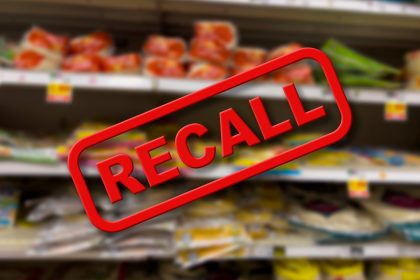Recent outbreaks linked to E. coli have raised significant concerns among consumers, prompting recalls of various products, including ground beef and carrots, due to contamination. With reports of illnesses continuing to emerge, it’s essential to understand the risks associated with E. coli and the importance of safe cooking practices to prevent infection.
What is E. coli?
Escherichia coli (E. coli) is a type of bacteria commonly found in the environment, food, and intestines of humans and animals. While many strains of E. coli are harmless and even beneficial for digestion, others can cause severe illness or even be fatal. E. coli is most well-known for the Shiga toxin-producing strains, such as E. coli O157:H7, which can lead to severe foodborne illnesses.
How do people get infected?
E. coli infections typically occur through the consumption of contaminated food or water, contact with infected animals, or interaction with infected individuals. Foods that are most often linked to E. coli outbreaks include undercooked ground beef, raw fruits and vegetables, unpasteurized dairy products, and contaminated water.
Symptoms of an E. coli infection can vary but typically include:
- Watery or bloody diarrhea
- Severe stomach cramps
- Vomiting
- Low-grade fever
One particularly dangerous strain, known as Shiga toxin-producing E. coli, can cause hemolytic uremic syndrome (HUS), a potentially fatal condition that leads to kidney failure. Vulnerable populations such as children, the elderly, and those with weakened immune systems are at the highest risk of developing severe complications from an E. coli infection.
Cooking and E. coli: What you need to know
Cooking food to the appropriate temperature is crucial to killing E. coli and other harmful bacteria. According to the Food and Drug Administration (FDA), ground beef should be cooked to a minimum internal temperature of 155°F for at least 17 seconds. However, the Centers for Disease Control and Prevention (CDC) and the U.S. Department of Agriculture (USDA) recommend cooking ground beef to 160°F to ensure that all harmful bacteria are eliminated.
Using a food thermometer
To accurately check the temperature of meat, it’s vital to use a food thermometer. Insert the thermometer into the thickest part of the meat to ensure it has reached the recommended safe cooking temperature. A digital or dial food thermometer provides an accurate reading and is an essential tool for safe cooking.
Challenges with vegetables
While cooking meat is relatively straightforward, vegetables like carrots present a unique challenge. Cooking carrots can kill E. coli, but many people prefer to eat them raw, which poses a risk since there is no “kill step” involved in consuming raw vegetables. For safety, experts recommend cooking carrots and other vegetables to an internal temperature of 160°F to eliminate any potential bacteria.
Trends in produce contamination
In the past, produce like carrots was not considered a significant source of E. coli outbreaks. However, recent trends have shown that fruits and vegetables are increasingly being contaminated with harmful pathogens, including E. coli. The CDC has identified leafy greens, such as spinach, lettuce, and kale, as major sources of E. coli infections in the U.S. This shift in food safety concerns reflects the growing need for consumers to remain vigilant about produce contamination.
The reason for this increase in contamination could be related to various factors, such as contaminated irrigation water, improper handling during processing, or cross-contamination in packing facilities. While produce is generally healthy, consumers should be aware of the potential risks and take necessary precautions when handling raw fruits and vegetables.
Best practices for food safety
Cooking food to the correct temperature can significantly reduce the risk of E. coli infection, but it is not a foolproof method, especially when dealing with recalled products. If you have recalled items at home, it is crucial to follow recall instructions and dispose of them rather than attempting to cook them to eliminate the bacteria. Additionally, thoroughly clean any surfaces, utensils, or items that came into contact with the recalled food to prevent cross-contamination.
Here are some essential food safety tips to help prevent E. coli and other foodborne illnesses:
General cooking temperatures (USDA guidelines)
The USDA recommends cooking foods to the following temperatures to ensure safety:
- Poultry and leftovers: 165°F
- Fish and shellfish: 145°F
- Beef, veal, pork, and lamb chops or steaks: 145°F
These temperatures help ensure that harmful bacteria, including E. coli, are killed during the cooking process.
Four steps to food safety (CDC guidelines)
To reduce the risk of foodborne illness, the CDC recommends following these four simple steps:
- Clean: Wash hands, surfaces, and utensils often. Clean produce thoroughly and avoid cross-contamination by using separate cutting boards for raw meats and vegetables.
- Separate: Keep raw meat separate from ready-to-eat foods, such as fruits and vegetables, to prevent cross-contamination.
- Cook: Cook foods to the correct temperature using a food thermometer. Make sure ground beef reaches at least 160°F, and poultry and leftovers reach 165°F.
- Chill: Store perishable foods, including leftovers, in the refrigerator at or below 40°F to slow bacterial growth. Don’t leave perishable foods at room temperature for more than two hours.
By following these guidelines, you can significantly reduce the risk of E. coli and other foodborne illnesses, ensuring safer food consumption for you and your family.
Additional tips for preventing E. coli infections
- Avoid unpasteurized products: Raw milk, unpasteurized juice, and other unpasteurized foods can carry harmful bacteria, including E. coli. Always choose pasteurized products when available.
- Be cautious with ground beef: Since E. coli bacteria can spread throughout ground beef during the grinding process, it is especially important to cook ground beef thoroughly.
- Check for recalls: Stay informed about food recalls, particularly those related to E. coli contamination, by checking the FDA and USDA websites regularly. If a product you’ve purchased is recalled, dispose of it immediately according to the manufacturer’s instructions.
- Proper hand hygiene: Wash your hands with soap and water for at least 20 seconds, especially before preparing food, after handling raw meats, and after using the restroom.
Conclusion
E. coli is a potentially dangerous bacterium that can lead to serious illness if proper precautions are not taken. Understanding how E. coli spreads, the importance of cooking food to safe temperatures, and practicing good food safety habits are crucial for preventing infections. While cooking meat to the right temperature can eliminate many risks, consumers must remain vigilant when handling produce, particularly raw fruits and vegetables, and be aware of any recalls related to contamination.
By following the CDC’s food safety guidelines, using a food thermometer, and staying informed about recalls, you can enjoy safer meals while minimizing the risk of E. coli and other foodborne illnesses.
Remember, when in doubt, cook your food thoroughly, clean surfaces regularly, and handle food with care to protect your health and well-being.
















